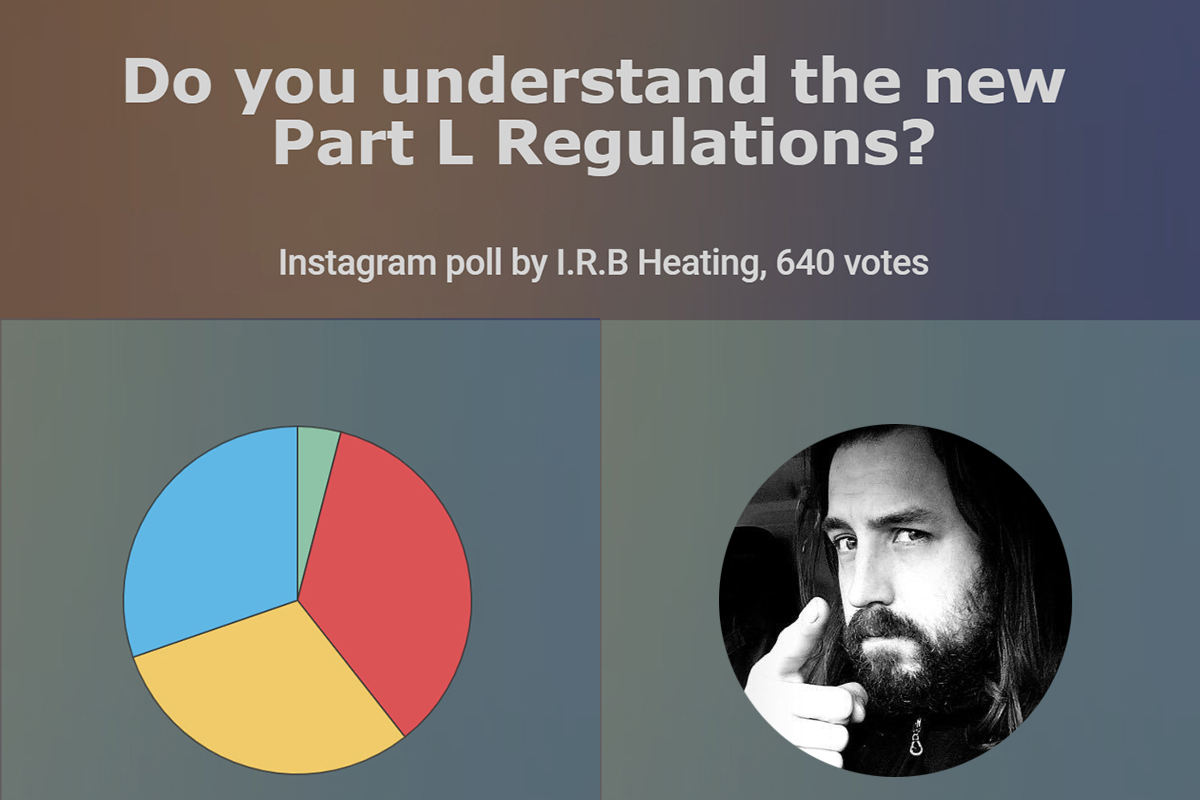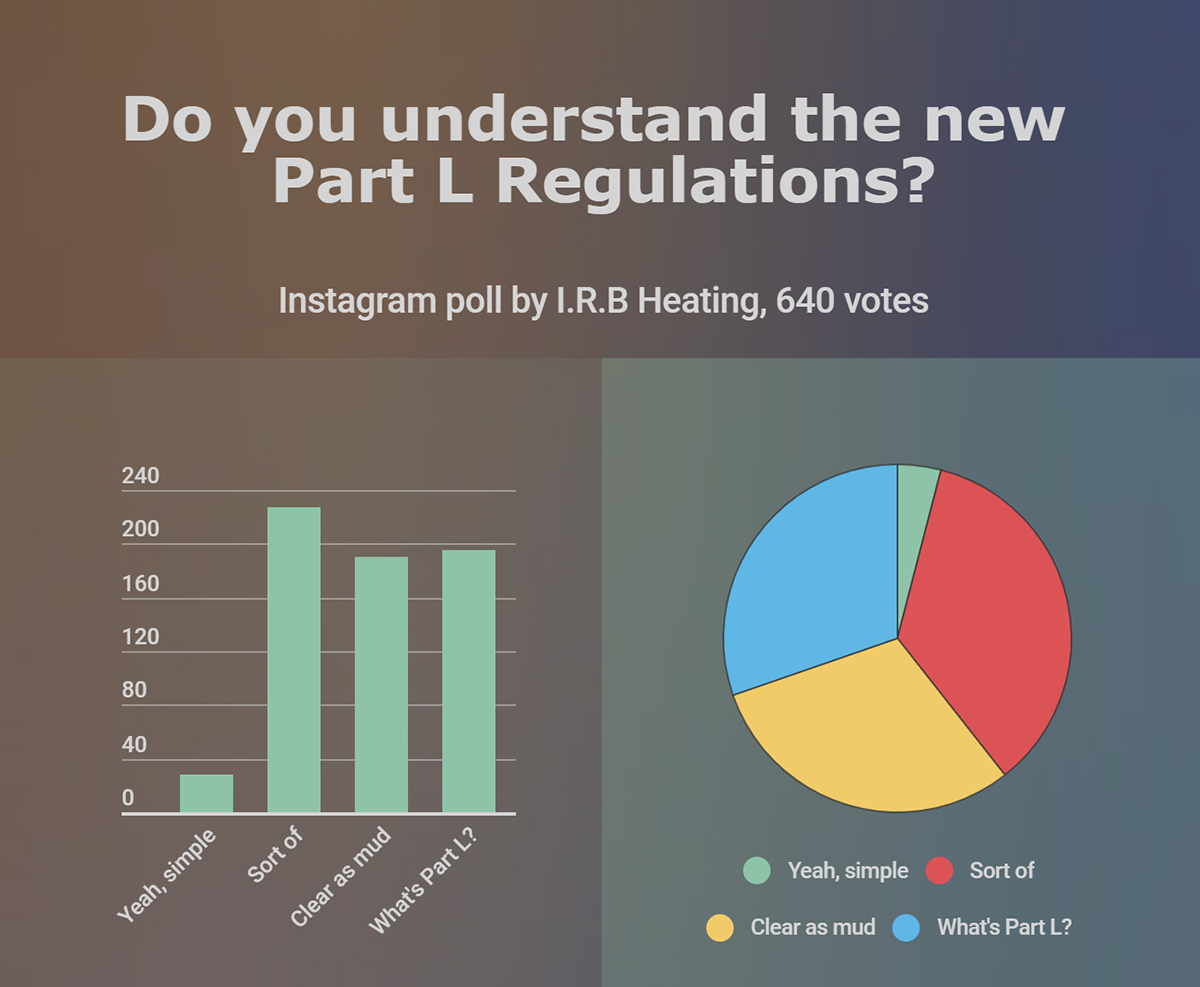
The new Approved Document L came into effect on June 15th, resulting in a raft of changes covering (but by no means limited to) the flow temperature of heating systems, requirements for thermostatic room controls, and checking of water quality.
In terms of what installers need to know about how this affects their day-to-day working practices, the task of putting out the most relevant information has largely fallen to manufacturers and the trade media (there’s a selection of links at the end of this post which could help) but of course that’s not guaranteed to reach everyone. A social media poll has revealed that there’s a widespread lack of understanding of what’s involved.
The poll, conducted by Ian Briggs (aka I.R.B Heating) on Instagram, collected 640 votes and demonstrates just how much confusion there is about the changes. Just one in 25 respondents stated they’ve got to grips with the new Part L.
Ian comments: “I put the poll up on my story because I had a big job to quote and I wasn’t 100% sure on exactly what I needed to be quoting for, and if it applied to existing systems or new systems. If I’m quoting as per the new regs, would the other people quoting be doing the same? As you can see from the poll, very few people fully understand the new changes. I feel like we need some more clarification.”
The full results of poll are shown in the graphic below:

What does all of this mean in the real world? Aside from the fact that non-compliance leaves you open to prosecution, there’s a very real risk of customers being given inaccurate and/or conflicting information when installers are quoting for a job. Following that to its natural conclusion, it could easily result in work being both non-compliant and considerably less efficient.
More information
Here’s a small selection of content that may help with understanding elements of the changes:
Approved Document L
Conservation Of Fuel And Power Approved Document L
Low temperature heating
Upskilling for low temperature heating
Are you ready for lower flow temperatures?
TRVs
WATCH: Explaining TRVs and Part L changes to your customers
Water quality
WATCH: Helping installers navigate the latest changes to Part L












